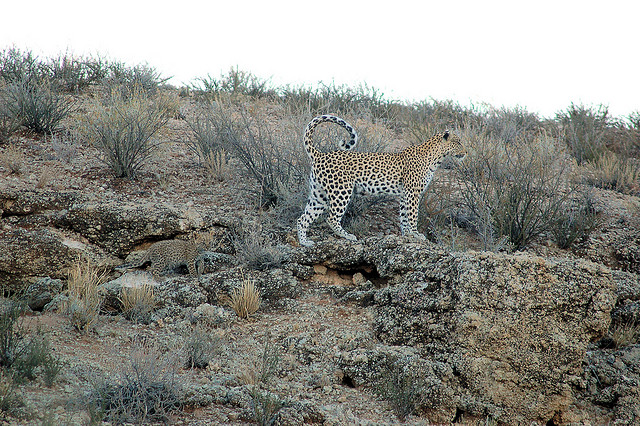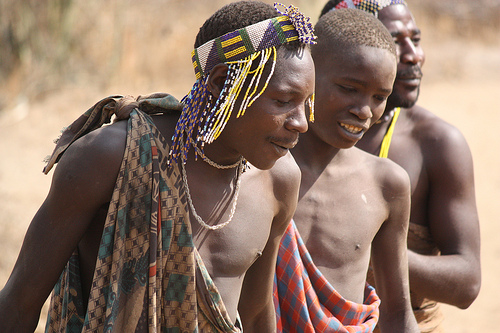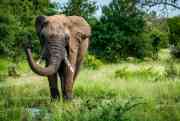Who are the Khoisan People? The Khoikhoi and San Tribes in South African Culture
The Khoisan people of South Africa, offer a window into another world. From their unique art forms to their rich spiritual beliefs, the culture of the Khoisan tribe is fascinating. With its deep history spanning thousands of years, this ancient group of hunter-gatherers provides us with a glimpse into the past.
Who are the Khoisan People of South Africa?
The Khoisan people are an ancient ethnic group with a long and intriguing history. The Khoisan are believed to be the oldest human inhabitants of southern Africa.
Though collectively referred to as the Khoisan, historians believe the tribe consists of two distinct groups, the Khoe (also called the Khoikhoi or Khoekhoe), and the San (or San Bushmen). In modern times, and with fractured communities, the names have been amalgamated to identify the Koe and the San as a single group, the Khoisan.
The San people were hunter-gatherers. They maintained a close relationship with their environment because they needed to read the signs of nature to survive. The San traditionally relied on gathering wild fruits and plants, as well as hunting wild game, and therefore led a nomadic lifestyle. It is agreed that the San hunter-gatherers were the first people of South Africa. Paleo anthropologists believe that the San were living in South Africa about 20,000 years before any other groups.
Evidence of the San people exists at 20 to 30 thousand rock art sites in South Africa alone. These examples of San rock art are scattered across the county, from the Northern, Western, and Eastern Cape, to the Drakensberg Mountains in KwaZulu-Natal. The San people were everywhere.
 Drakensberg San rock art, South Africa
Drakensberg San rock art, South Africa
| In 1928, German explorer and anthropologist Leonhard Schulze coined the term ‘Khoisan’ to refer to both the Khoe herders and the San hunter-gatherers. Today, the San people prefer to be identified as San. In South Africa, some people who are reclaiming their ancestry refer to themselves as Khoesan. |
Early African Migrations & Colonization
While the San were South Africa’s first people, a string of migrations and colonization pushed this African culture to the brink of extinction. The arrival of the Khoe people, followed by Nguni (Bantu) migrations, and finally the arrival of European settlers after 1652, all had lasting impacts on the San people.
The Khoekhoe or Khoi people were pastoralists, who primarily kept cattle, goats, and sheep. It is thought that the San tribe in Botswana acquired cattle about 10,000 years ago, which altered their way of life. They became the semi-nomadic Khoekhoe or Khoi and migrated south seeking grazing. Their semi-nomadic lifestyle brought them into contact and potential conflict with the San people further south, who were assimilated or pushed out of good pastures.
 San People in Desert, southern Africa
San People in Desert, southern Africa
| Khoikhoi (or Khoe), means 'men of men' or 'the real people'. |
From at least the 4th century, Nguni migrants began to arrive in Southern Africa. These Bantu ethnic groups were pastoralists, who arrived with iron age technologies, and highly organized societal structures. The Nguni migrants from central Africa became the Zulu and Xhosa of today, as linguistic similarities show.
Though conflict over valuable resources, hunting grounds, and pastures for cattle, gradually saw the San pushed into the interior, the explosive click sounds found in the Xhosa language, as well as certain physical features (high cheekbones, yellowish skin tones, and narrowed eyes), indicate a fair amount of integration. The San identity, already weakened, the final blow for the San people was the arrival of European settlers in the mid-1600s.
In 1652, Jan van Riebeeck arrived in the Cape to establish a colony in service of passing mariners. The European colonists came into direct conflict with the semi-nomadic Khoisan people, over cattle and pastures. The Khoisan people were labelled ‘Bushmen’ and hunted like animals, dispossessed of land, imprisoned, decimated by European diseases, and ultimately pushed to the brink of extinction.
Later, the Khoisan became known as the San Bushmen and the Kalahari Bushmen. The term "Bushmen" is now considered derogatory and no longer widely used.
Today there are estimated to be about 100,000 Khoisan, who speak 35 different dialects, living across southern Africa. The remaining Khoisan people are mostly found in the Kalahari regions of Namibia, Botswana, and South Africa.
|
South Africa's motto is a /Xam phrase: !ke e: /xarra //ke, which means: "diverse people unite". This motto, in the /Xam dialect of the Khoikhoi and San (Khoisan), is written on the South African coat of arms. |
Khoisan Rock Art
The Khoisan people are best known for their rock art. Over 20,000 rock art sites, scattered across South Africa, have given us a window into their world. Found mostly in caves, the San paintings were made with natural pigments, and are thus seldom well preserved. The Linton Panel, removed in its entirety and housed at the Iziko Museum in Cape Town, is one of the best-preserved examples of San art in the world.
The Khoisan tribe used various techniques to make rock art, such as ochre paintings, gouging into soft rocks, and engraving stones. Yellow and red ochres were extracted from the earth, black from charcoal, and white from bird droppings or other animal dung. What they mean and represent, however, has been subject to debate for decades.
Initially, the San artworks were thought to represent scenes from everyday life. Wildlife, hunting parties, and even the arrival of settlers in more recent representations. Current theories have drawn links between the San's rock art and their belief in parallel worlds. It is thought that the artists were also shamans. The San rock art sites are believed to be entry points into the spiritual realms, and the human-animal figures, are representations of the transformations that happen during these rituals.
The oldest San rock paintings, found in Namibia, have been dated to be 26,000 years old. Though many are poorly preserved, collectively, this fleeting archive of more than a million individual images represents an incredible archive of beliefs and cultural practices. They may give us clues about the Khoisan culture and way of life but ultimately remain shrouded in mystery.
 The Khoisan people, southern Africa
The Khoisan people, southern Africa
|
Best Places to See San Rock Art |
|---|
|
The San People in Popular Culture
Tragic as the plight of the "Bushman" has been, the San have captured an important part of the national psyche in South Africa. San people are seen as the original conservationists in southern Africa. The San way of life entails leaving no trace and living in harmony with the natural world, which has been lauded by the conservation movement. In popular culture, the Khoisan people have appeared in children's books, short stories, and films.
In the 1950s, Laurens van der Post was commissioned by the BBC to film a documentary about the San in the Kalahari. Based on this experience, van der Post published “The Lost World of the Kalahari”. Maligned by some, the work was his most famous publication and brought the idea of the San tribe to a global audience.
In Margaurite Polland’s 1983 award-winning children’s book “The Woodash Stars”, she tells the tale of a San hunter, Gau, who lost in the desert, finds his way home by following the wood ash stars thrown into the air by his heart broken love, Xama. The book is beautifully illustrated and artfully narrated. It captures a little bit of the magic and mystery of these enigmatic people.
In 1981, in the heart of the apartheid regime, Jamie Uys directed “The Gods Must be Crazy”. This unassuming South African export broke box office records around the world. The story revolves around a San community and a glass Coke bottle that falls from the sky. N!xau, the lead San character, approaches all of his experiences with Europeans, through logic. His logical conclusions bring into stark relief many of the antics and assumptions of Western civilization, and the results are hilarious. “The Gods Must Be Crazy” has attained cult status around the world.
The Khomani San People in South Africa Today
__medium.jpeg) Deception Valley bushmen, South Africa
Deception Valley bushmen, South Africa
Following the systematic dispossession of land during the colonial era, in 1995, the San tribe lodged a land claim within the Kgalagadi Transfrontier Park. Subsequently, in 1999, the Khomani San were granted over 68,000 hectares of land, as well as extensive land-usage rights within the Kgalagadi Park. This remains the only successful aboriginal land claim in South Africa.
The Heritage Park, as it has come to be known, is jointly managed between SANParks, Khomani San, and local Mier communities. There is a Living Museum within the park that seeks to educate visitors about the way of life of the remaining San people. Activities include shooting arrows, taking part in cultural ‘play’, doing nature walks, medicinal plant tours, or even going hunting with an experienced San hunter. Visitors can also buy local arts and crafts.
In addition to the eco-tourism opportunities, there is a Veld School, which ensures that indigenous San knowledge and skills are transferred to the younger generation. Students are instructed within the dunes of the Kgalagadi Transfrontier Park in a traditional manner and environment.
Find out more about San Rock Art in Southern Africa and where to see these cultural sites. Or get in touch with our South African travel experts.
If you liked this post, these trips cover similar ground…
- 3 Day Cape Town Safari to Sanbona Wildlife Reserve
- Kalahari Bushmen, Okavango Delta & Savuti Safari in Botswana
- Kalahari Desert Botswana Safari (Camping)
- Budget Ethiopia Cultural Tour of Omo Valley Tribes





 On the outskirts of Marloth Nature Reserve, Andrew can be found walking and swimming in the beautiful Langeburg Mountains. He is passionate about animals, birds, reptiles, and plants and loves nothing more than an adventure in nature. An established artist with a master's in English literature, Andrew has traveled far and wide but South Africa still has his heart.
On the outskirts of Marloth Nature Reserve, Andrew can be found walking and swimming in the beautiful Langeburg Mountains. He is passionate about animals, birds, reptiles, and plants and loves nothing more than an adventure in nature. An established artist with a master's in English literature, Andrew has traveled far and wide but South Africa still has his heart.


 For some of South Africa's best game viewing and stunning raw landcapes, away from the maddening hordes... Can you say Kgalagadi?
For some of South Africa's best game viewing and stunning raw landcapes, away from the maddening hordes... Can you say Kgalagadi?








